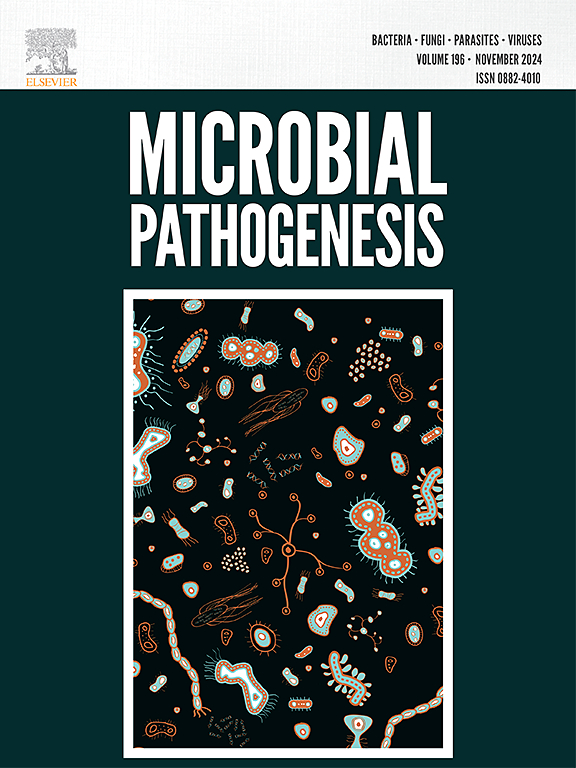龋齿影响ASD男性儿童口腔微生物组成。
IF 3.5
3区 医学
Q3 IMMUNOLOGY
引用次数: 0
摘要
背景:自闭症谱系障碍(ASD)是一种常见的神经发育障碍,越来越多的证据表明某些口腔微生物可能会加重ASD症状。龋齿与神经系统密切相关,影响口腔微生物的组成。因此,在研究ASD患者口腔微生物组成时,必须排除龋齿的影响,才能准确识别ASD潜在的口腔致病因子。方法:对广州市30例ASD患儿和34例典型发育(TD)患儿进行病例对照研究。参与者被分为四组:无龋ASD (ASD- n)、有龋ASD (ASD- c)、无龋TD (TD- n)和有龋TD (TD- c)。收集所有参与者的牙菌斑和唾液样本,并使用16S rRNA高通量测序进行分析,以评估不同龋病条件下ASD儿童口腔微生物组成和多样性的变化。结果:斑块和唾液微生物的α多样性普遍较低,而β多样性在ASD患儿和对照组之间存在显著差异。在门水平上,最占优势的两个门是杆状菌门和放线菌门。在属水平上,优势属为链球菌和卟啉单胞菌。LEfSe分析显示,与没有龋齿的对照组相比,无龋齿的ASD儿童的某些分类群,如牙菌斑中的Ruminococcaceae细菌UCG-005和粘液乳杆菌,以及唾液中的放线菌数量显著增加(P < 0.001)。此外,与受龋齿影响的对照组相比,斑块中的普雷沃氏菌、肉杆菌和沙顿菌以及唾液中的胃链球菌在无龋齿的ASD儿童中更为普遍(P < 0.001)。结论:龋齿影响ASD患儿口腔微生物的多样性和组成。优势属,链球菌和卟啉单胞菌,与龋齿和ASD的发展有关。患有龋齿的儿童的某些生物标志物与龋齿有关,而无龋齿的ASD儿童的其他生物标志物与ASD本身有关。这些发现为识别与ASD相关的真正口腔病原体提供了新的见解。本文章由计算机程序翻译,如有差异,请以英文原文为准。
Caries influences the composition of oral microorganisms in male children with ASD
Background
Autism Spectrum Disorders (ASD) is a prevalent neurodevelopmental disorder, with growing evidence suggesting that certain oral microorganisms may worsen ASD symptoms. Caries is closely linked to the nervous system and influences the composition of oral microorganisms. Therefore, when studying the oral microbial composition in ASD, the effects of caries must be excluded to accurately identify potential oral causative agents of ASD.
Methods
A case-control study was conducted with 30 children diagnosed with ASD and 34 typically developing (TD) control children, both with and without caries, from Guangzhou city. Participants were categorized into four groups: ASD without caries (ASD-N), ASD with caries (ASD-C), TD without caries (TD-N), and TD with caries (TD-C). Plaque and saliva samples were collected from all participants and analyzed using 16S rRNA high-throughput sequencing to evaluate changes in oral microbial composition and diversity in children with ASD under varying caries conditions.
Results
The alpha diversity of plaque and saliva microorganisms was generally lower, and beta diversity differed significantly between children with ASD and control groups. At the phylum level, the two most dominant phyla were Bacillota and Actinomycetota. At the genus level, the predominant genera were Streptococcus and Porphyromonas. LEfSe analysis revealed that certain taxa, such as Ruminococcaceae bacterium UCG-005 and Lactobacillus mucilaginosus in dental plaque, and Actinobacillus in saliva, were significantly more abundant in caries-free ASD children compared to caries-free controls(P < 0.001). Furthermore, Prevotella, Carnobacterium and Suttonella in plaque, along with Peptostreptococcus in saliva, were more prevalent in caries-free ASD children compared to caries-affected controls (P < 0.001).
Conclusion
Caries impacts the diversity and composition of oral microorganisms in children with ASD. The dominant genera, Streptococcus and Porphyromonas , are linked to both caries and the development of ASD. Certain biomarkers in children with caries were associated with caries, whereas others in caries-free ASD children were linked to ASD itself. These findings offer new insights into identifying the true oral pathogens related to ASD.
求助全文
通过发布文献求助,成功后即可免费获取论文全文。
去求助
来源期刊

Microbial pathogenesis
医学-免疫学
CiteScore
7.40
自引率
2.60%
发文量
472
审稿时长
56 days
期刊介绍:
Microbial Pathogenesis publishes original contributions and reviews about the molecular and cellular mechanisms of infectious diseases. It covers microbiology, host-pathogen interaction and immunology related to infectious agents, including bacteria, fungi, viruses and protozoa. It also accepts papers in the field of clinical microbiology, with the exception of case reports.
Research Areas Include:
-Pathogenesis
-Virulence factors
-Host susceptibility or resistance
-Immune mechanisms
-Identification, cloning and sequencing of relevant genes
-Genetic studies
-Viruses, prokaryotic organisms and protozoa
-Microbiota
-Systems biology related to infectious diseases
-Targets for vaccine design (pre-clinical studies)
 求助内容:
求助内容: 应助结果提醒方式:
应助结果提醒方式:


